(4317 products available)


















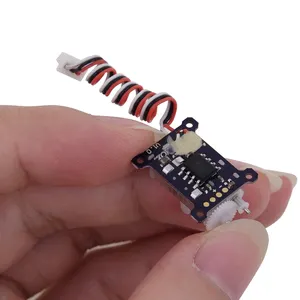



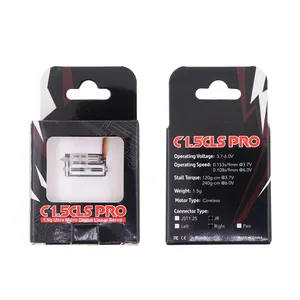























































































































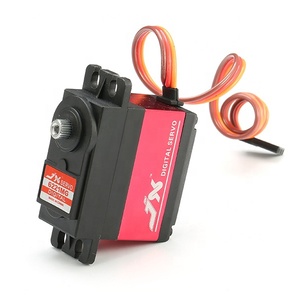
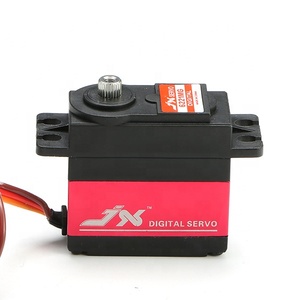
























































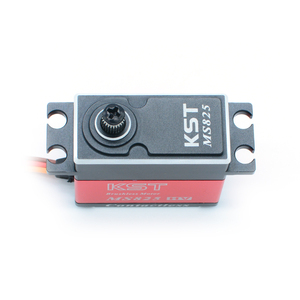

There are various kinds of servos that are used for planes. Each type is distinguished by its size, strength, speed, and accuracy and is meant to control different functions in the aircraft. Here are some common types:
Standard Servos
This is the most commonly used type of servo for planes. It is versatile and operates well for most applications. This type of standard servo is attached to a control surface, such as an elevator or aileron, and is responsible for moving the surface in response to pilot input. The standard servo for planes comes in different sizes with a varying degree of torque and speed. This makes it easy to find one that fits any model airplane.
Mini and Micro Servos
This type of servo for planes is smaller than the standard servo. It is used in lightweight applications. It is ideal for models where space is limited. These mini and micro servos are commonly found in indoor planes, park flyers, and other small radio-controlled aircraft.
Digital Servos
The digital servo for planes uses a digital circuit for signal processing. This allows for faster response times and improved resolution. The digital servos offer better centering, holding power, and consistency. These features make them ideal for high-performance aircraft where precision is essential. They are also more resistant to radio interference, ensuring a reliable signal even in challenging environments.
Metal Gear Servos
This type of servo for planes is equipped with metal gear. This allows the servo to handle higher torque and reduces wear and tear. The all-metal gears provide better strength and durability. This is particularly important for larger planes or those performing aggressive maneuvers. The gears are less likely to strip in the event of a crash or collision.
Torque Servos
Torque servos are designed to offer high torque, particularly at low speeds. This ensures that the servo can move large control surfaces quickly. Torque servos are ideal for large airplanes or those with heavy control surfaces. Additionally, they are useful during high-speed maneuvers when precise control is needed.
Winch Servos
Winch servos are used in gliders and other aircraft with retractable control surfaces. The servos have a spool that winds up a line or cable. This allows for smooth and controlled movement of flaps, wings, or other surfaces. Winch servos are popular in sailplanes where precise control of the wing's position is necessary.
When selecting a plane servo, there are several factors to consider to ensure compatibility and optimal performance for the specific application. First, the torque requirement is essential. Torque is needed to move the control surfaces against aerodynamic resistance. Larger control surfaces or high-performance planes need more torque to be stable. The torque range should be checked to ensure the servo can handle the required load without stripping gears or damaging the servo.
Also, the speed of the servo is crucial. Speed is the time taken to respond to the control inputs. The faster the response, the smoother the flight. A high-speed servo reduces lag and improves the plane's maneuverability. However, the faster servos are more expensive. Therefore, a balance between speed and cost should be maintained. The durability of the servo is vital. Servos are subjected to extreme conditions like vibrations, temperature, and humidity. A durable servo can withstand these conditions without malfunctioning. Its quality and construction materials should be checked.
Another essential factor is the servo's range of motion. The servo should have a complete range of motion to move the control surfaces through their full deflection. Limited range of motion results in ineffective control. The servo compatibility with the control system should be considered. Various servos use other control signals and voltages. The servo should match the receiver and transmitter specifications to ensure proper functionality.
Additionally, the installability of the servo is necessary. The servo should fit into the designated compartment without forcing. Compatibility with the size and shape of the servo should be ensured. Also, the mounting hardware should be checked to ensure it is appropriate. The budget for the servo is also essential. Servos come at different prices depending on the features and specifications. A cost-effective choice should be made without sacrificing quality.
To choose the correct plane servo, it is important to understand the features, functions, and design elements that go into making it effective for controlling aircraft movements. This understanding allows for an informed decision that aligns with the specific requirements needed for optimal performance and reliability in remote-controlled aircraft.
There are various safety and quality aspects that one should consider when using a servo motor for planes. These include the following:
Overload protection
The overload protection in the servo motor helps to prevent damage when the plane gets stuck or experiences an increase in resistance. This is achieved by automatically shutting down the power supply or reducing the output torque. This protects the plane and allows for continued flying.
Built-in sensors
Servos with built-in sensors monitor the position, temperature, and speed of the motor. They do this to detect any anomalies. When there are any detected changes, the sensors send signals to the controller to initiate corrective actions. This ensures that the motor maintains optimal performance.
Waterproof and dustproof
A waterproof and dustproof servo protects the motor from different environmental factors. This includes moisture, dust, and debris. It enhances the durability and longevity of the motor.
Quality materials
Servos made with quality materials such as metal or aluminum housings are more durable. They can withstand rough handling and different environmental conditions. This makes them ideal for use in planes.
Compliance with safety standards
Different servos comply with various industry safety standards. This includes RoHS, CE markings, and REACH. These certifications show that the servo has undergone testing and meets the safety requirements.
Quality control
The quality control of the manufacturing process ensures that the servo motor meets all the quality and safety standards. This includes inspections, testing, and monitoring the whole production process.
What is the lifespan of a plane servo?
The lifespan of a plane servo is approximately 1.5 million cycles. However, the lifespan can be extended through proper maintenance and care.
How is a plane servo powered?
A plane servo is powered by a direct current that ranges from 4.8 to 6.0 volts. The power supply used can be a battery or a receiver.
What are the signs of a damaged plane servo?
Some common signs of a damaged plane servo include strange noises, burning smell, and loose connections.
Can a plane servo work without a receiver?
One of the main components of a servo is a receiver. Therefore, a plane servo cannot work without a receiver.